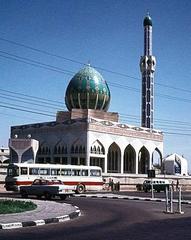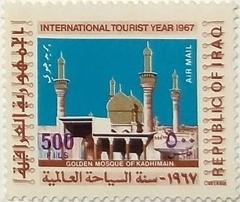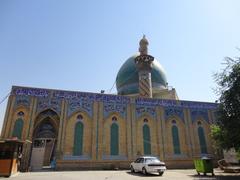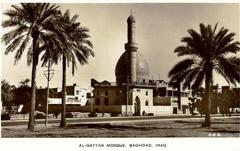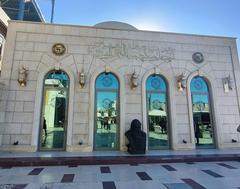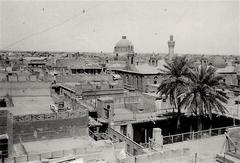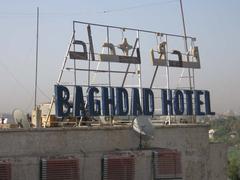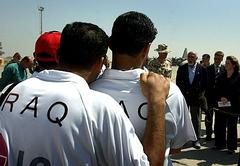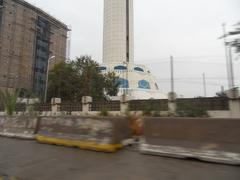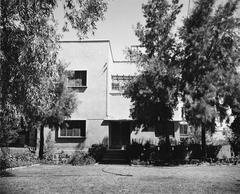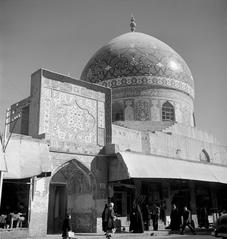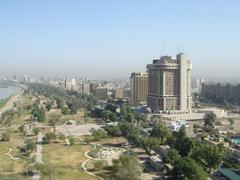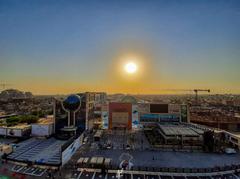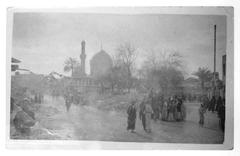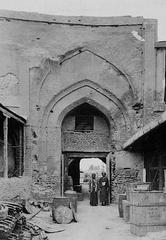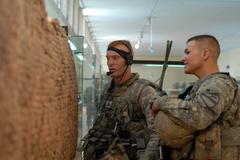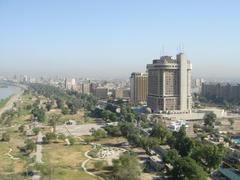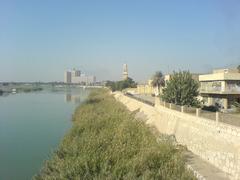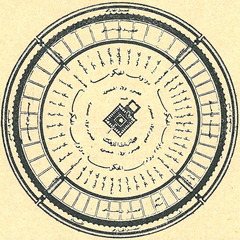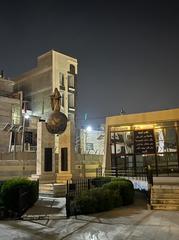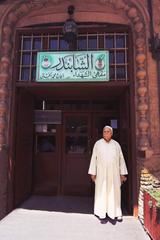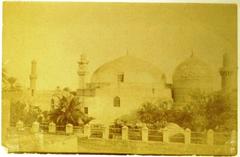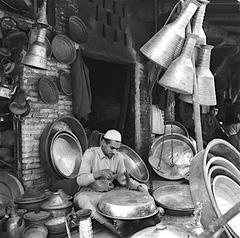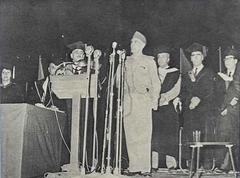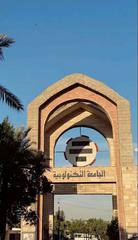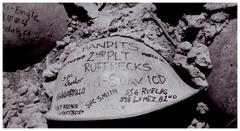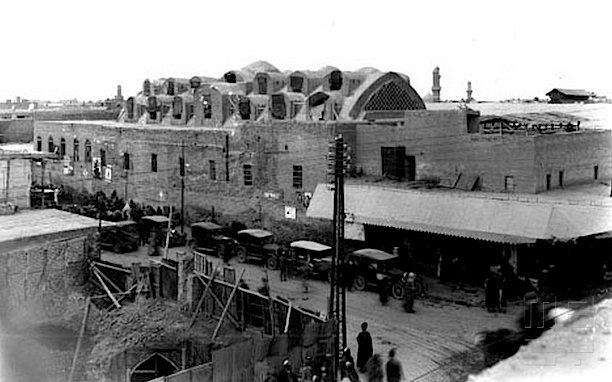
Comprehensive Guide to Visiting Khan Murjan, Baghdad, Iraq
Date: 17/08/2024
Introduction
Khan Murjan, found within the vibrant souks of Baghdad, Iraq, stands as a remarkable testament to the rich architectural and cultural heritage of the 14th century. This historical caravanserai, constructed between 1356 and 1358 by Amin al-Din Murjan, the Jalayirid governor of Baghdad, was originally designed to serve as an inn for traveling merchants. Its unique architectural features, including massive brick arches and perforated windows, distinguish it from other caravanserais of the period (Wikipedia). Over the centuries, Khan Murjan has transformed, serving various roles from a caravanserai to a museum and now a tourist restaurant (Wikipedia). This guide aims to provide comprehensive insights into Khan Murjan’s historical significance, architectural marvels, and visitor essentials, ensuring a fulfilling visit to one of Baghdad’s most iconic landmarks.
Table of Contents
- Introduction
- Historical Background
- Recent Developments
- Modern-Day Significance
- Visitor Information
- Conclusion
Historical Background
Origins and Construction
Khan Murjan, located in the bustling souk of Baghdad, Iraq, is a historical caravanserai built between 1356 and 1358 by Amin al-Din Murjan, the Jalayirid governor of Baghdad. The primary purpose of the khan was to serve as an inn for traveling merchants, providing shelter for them, their caravans, goods, and animals. Unlike many other khans, Khan Murjan is unique in that its inner courtyard is covered by massive brick arches, reaching a ceiling height of 13 meters (43 feet) (Wikipedia).
Architectural Significance
The architecture of Khan Murjan is distinguished by its crenelated arches and perforated windows, which not only add to its aesthetic appeal but also serve functional purposes. The building features a series of walls and vaults with different shapes and dimensions interspersed with windows, providing natural lighting and reducing the pressure caused by the weight of the arches (IntechOpen). The khan has two floors: the ground floor contains 22 rooms, and the upper floor contains 23 rooms. The exterior is adorned with Islamic calligraphy, adding to its historical and cultural significance (Wikipedia).
Historical Uses
Over the centuries, Khan Murjan has undergone several transformations. Initially built as a caravanserai, it later served various functions. In 1937, the building was repurposed as the Museum of Arab Antiquities, showcasing Islamic artifacts as a symbol of Arab nationalism under the direction of Sati’ al-Husri (Wikipedia). By the mid-1980s, under Saddam Hussein’s regime, the khan was converted into a tourist restaurant, offering an authentic Baghdadi atmosphere with traditional Iraqi Maqam music and waiters in traditional clothing (Wikipedia).
Recent Developments
Cultural Influence
The influence of Khan Murjan extends beyond Baghdad. In Dubai, United Arab Emirates, the Khan Murjan Souk at WAFI Mall is a popular tourist destination, designed to mimic a 14th-century souk with architectural influences from historic Egypt, Syria, Morocco, and Turkey (Wikipedia). Additionally, a restaurant named Khan Murjan in Tampa, Florida, served traditional Iraqi and Halal food until its closure in November 2023 (Wikipedia).
Preservation and Rehabilitation
The preservation of Khan Murjan has been a collaborative effort involving specialists in architecture, history, heritage, archaeology, arts, maintenance, and interior design. These experts agree that cultural functions such as museums, libraries, art galleries, and exhibition halls are the most appropriate contemporary uses for heritage buildings like Khan Murjan. These functions extend the life of the heritage site and are compatible with its historical roots and symbolic and architectural values (IntechOpen).
Challenges and Restoration Efforts
Despite its historical significance, Khan Murjan has faced numerous challenges, including water damage and lack of maintenance. The building was reputedly in a state of disrepair for over two centuries, with waist-high flood water from the Tigris standing in the famous hallway. Restoration efforts in the mid-1980s and ongoing projects aim to address these issues, ensuring the building’s preservation for future generations (Wikipedia).
Modern-Day Significance
Today, Khan Murjan stands as a testament to Baghdad’s rich history and cultural heritage. It serves as a reminder of the city’s historical significance as a center of trade and culture. The building’s transformation into a tourist restaurant allows visitors to experience a piece of Baghdad’s history while enjoying modern amenities. The ongoing restoration efforts and the building’s continued use for cultural and tourist functions ensure that Khan Murjan remains a vital part of Baghdad’s heritage (IntechOpen).
Visitor Information
For those planning to visit Khan Murjan, it is located near the Al-Shuhada’a bridge, close to the riverbank. The building is open to the public from 9 am to 2 pm, and the entrance fee is 25,000 IQD (Voice of Guides). Visitors can explore the two floors of the khan, marvel at its architectural features, and enjoy a meal at the tourist restaurant. The building’s historical and cultural significance makes it a must-visit destination for anyone interested in Baghdad’s rich heritage.
FAQ
Q: What are the visiting hours for Khan Murjan?
A: Khan Murjan is open to the public from 9 am to 2 pm.
Q: How much are tickets for Khan Murjan?
A: The entrance fee is 25,000 IQD.
Q: Are there any guided tours available?
A: Yes, guided tours can be arranged to provide in-depth historical insights and details about the architectural features of Khan Murjan.
Q: What nearby attractions can visitors explore?
A: Visitors can explore other historical sites in Baghdad, such as the Al-Mustansiriya School and the Abbasid Palace, which are located nearby.
Conclusion
Khan Murjan is a historical and architectural gem in Baghdad, offering a unique glimpse into the city’s past while serving modern-day functions. Its preservation and continued use ensure that it remains a vital part of Baghdad’s cultural landscape. Don’t miss the chance to visit this remarkable site and immerse yourself in the rich history and culture of Baghdad. For further updates and travel tips, be sure to check out our other articles and follow us on social media.
References
- Wikipedia contributors. (2023). Khan Murjan. Wikipedia, The Free Encyclopedia. https://en.wikipedia.org/wiki/Khan_Murjan.
- IntechOpen. (2020). Architectural Analysis of Khan Murjan. https://www.intechopen.com/chapters/67342.
- ALIPH Foundation. (2023). Khan Murjan: A Cultural Icon of Baghdad. https://www.aliph-foundation.org/en/projects/khan-marjan-a-cultural-icon-of-baghdad.
- TravelSetu. (2023). Best Time to Visit Baghdad. https://travelsetu.com/guide/baghdad-tourism/best-time-to-visit-baghdad.
- Against the Compass. (2023). Is It Safe to Travel to Iraq? https://againstthecompass.com/en/is-it-safe-to-travel-to-iraq/.
- TravelSafe-Abroad. (2023). Baghdad Travel Safety. https://www.travelsafe-abroad.com/iraq/baghdad/.
- Wafi. (2023). Khan Murjan Souk at Wafi Mall. https://www.wafi.com/souk/.
- Voice of Guides. (2023). Ultimate Travel Guide About the Best Things to Do in Baghdad in 3-4 Days. https://voiceofguides.com/ultimate-travel-guide-about-the-best-things-to-do-in-baghdad-in-3-4-days/.



